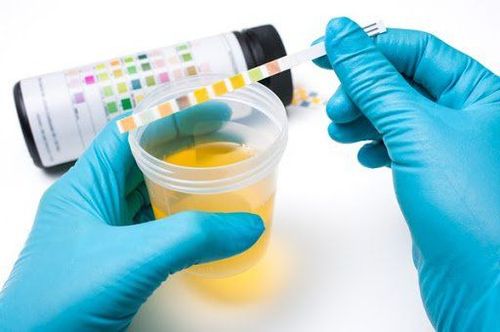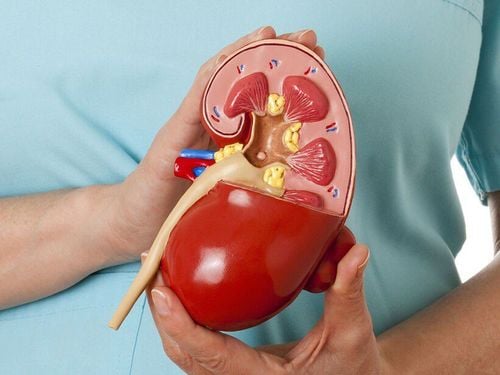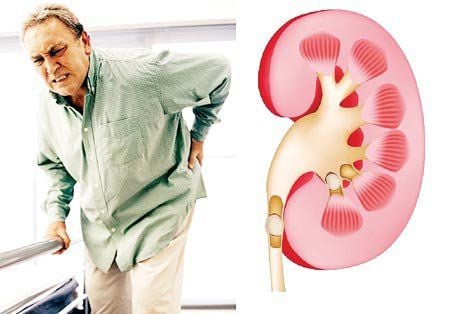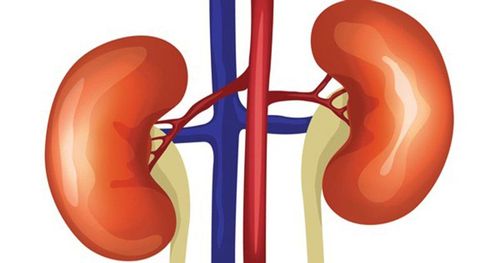This is an automatically translated article.
Fatty nephrotic syndrome is a term first used in 1913 to describe a group of symptoms including: Hyperlipidemia, hypoproteinemia, edema and proteinuria. Today, people use the term "nephrotic syndrome" to refer to diseases with proteinuria, edema, hypoproteinemia and hyperlipidemia.1. What is fatty nephrotic syndrome?
Nephrotic syndrome is a kidney disorder that causes the body to excrete too much protein in the urine.Normally, the basement membrane of the glomerulus has a negative charge and has a small pore size, so it does not allow protein to pass through to enter the urine. In patients with nephrotic syndrome, damage to the glomerular basement membrane increases the permeability of the glomerular basement membrane to protein and increases the pore size, causing proteinuria.
Nephrotic is a clinical and biochemical syndrome occurring in many glomerular diseases, characterized by high proteinuria (>=3.5 g/24 h), hypoproteinemia (< 60 g/l), hypoalbuminemia (<30g/l), blood lipids increased and there was edema.
2. Causes of nephrotic syndrome
Proteinuria (proteinuria): This is the main cause of clinical symptoms and biochemical changes in nephrotic syndrome. Decreased blood protein, edema: Decreased blood protein reduces plasma oncotic pressure, interstitial fluid drainage reduces effective circulating blood volume, leading to stimulation of the renin-angiotensin-aldosterone system, leading to increased secretion of ADH, increased retention Salt water makes the swelling worse. Symptoms of edema progress very quickly and are severe, there may be peritoneal, pleural, testicular, pericardial effusion, even brain edema. Decreased blood albumin: Proteinuria is more than the level of blood albumin biosynthesis in the liver, the degree of albumin reduction also depends on factors such as age, nutritional status, liver disease Hyperlipidemia: Decreased blood oncotic pressure and confusion Dysregulation of protein synthesis stimulates lipoprotein synthesis in the liver, leading to hyperlipidemia, the appearance of fat bodies in the urine (fat casts, birefringent bodies). Hyperlipidemia may also be due to a decrease in lipoprotein catabolism because the enzymes lipoprotein lipase, lexitin cholesterol transferase in the blood are reduced due to loss in the urine.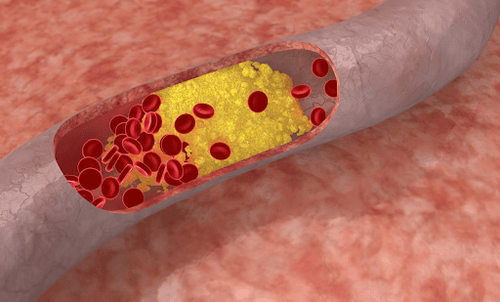
Tăng mỡ máu là một trong số những nguyên nhân gây hội chứng thận hư nhiễm mỡ
3. Classification of fatty nephrotic syndrome
People classified into 2 groups according to the cause of fatty nephrotic syndrome: the group of kidney diseases called primary nephrotic syndrome and the group of non-renal diseases with kidney damage called secondary nephrotic syndrome.3.1 Primary nephrotic syndrome Occurs 20% of patients with nephrotic syndrome.
Membranous glomerulonephritis, Proliferative membranous glomerulonephritis Focal–segmental glomerulosclerosis Other proliferative glomerulonephritis and fibrosis 3.2 Secondary nephrotic syndrome Systemic disease: Systemic lupus erythematosus nephropathy, caused by systemic vascular disease: mixed cryoglobulinemia, Wegener's granulomatosis, polyarteritis, allergic vasculitis. Metabolic disorders: Diabetic kidney disease, starch deposition. Drug-induced kidney disease: Non-steroidal anti-inflammatory drugs, penicillamine, lithium, catoprion, heroin, probenecid, chlorpropamide, rifampicin, tolbutamide, phenindione... Toxic nephropathy: Gold salts, mercury, and other heavy metals . Infectious kidney diseases: Bacterial infections (streptococcal, syphilis, subacute infective endocarditis, visceral abscesses), viral infections (hepatitis B, hepatitis C, HIV, cytomegalovirus), parasites (malaria, toxoplasma, schistosomiasis...) Allergies: Snake venom, bee venom, hypersensitivity reactions. Cancer: Hodgkin's disease, lymphocytic leukemia (usually causing minimally damaged glomerulopathy). Solid tumors (usually causing membranous glomerulopathy). Hereditary kidney disease: Alport syndrome, Fabry disease, sickle cell disease, congenital nephrotic syndrome, nail-patella syndrome. Other causes: pregnancy, organ rejection, serum sickness.
4. Complications of fatty nephrotic syndrome
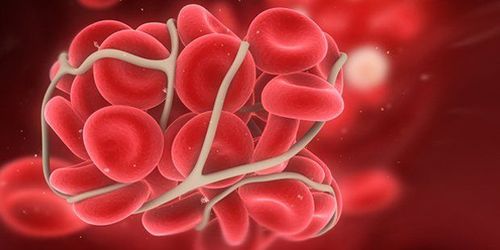
Hội chứng thận hư nhiễm mỡ có thể làm tăng nguy cơ phát triển cục máu đông trong tĩnh mạch của bạn
3.1 Blood clots The failure of the glomeruli to filter blood properly can lead to loss of proteins that help prevent blood clotting. This increases your risk of developing blood clots in your veins.
3.2 Elevated blood cholesterol and triglycerides When the level of the protein albumin in the blood decreases, the liver will increase the production of more albumin. At the same time, the liver releases more cholesterol and triglycerides.
3.3 Malnutrition Excessive loss of plasma proteins can lead to malnutrition. This can lead to weight loss, but can be missed by edema. Patients may also have anemia, low blood protein levels, and low levels of vitamin D.
3.4 High blood pressure Glomerular damage and the resulting accumulation of excess fluid in the body can cause hypertension
3.5 Acute kidney injury If the kidneys lose their ability to filter blood due to glomerular damage, waste products can build up in the blood. If this happens, the patient may need emergency dialysis — an artificial means of removing extra fluid and waste from your blood — typically with an artificial kidney machine (dialysis machine).
3.6 Chronic kidney disease Nephrotic syndrome can cause the kidneys to lose function over time. If kidney function declines too much, dialysis or a kidney transplant may be needed.
3.7 Infections People with nephrotic syndrome have a higher risk of infection.
Please dial HOTLINE for more information or register for an appointment HERE. Download MyVinmec app to make appointments faster and to manage your bookings easily.
SEE MOREDangerous complications of nephrotic syndrome What should be noted in the treatment of nephrotic syndrome Diet for patients with nephrotic syndrome




